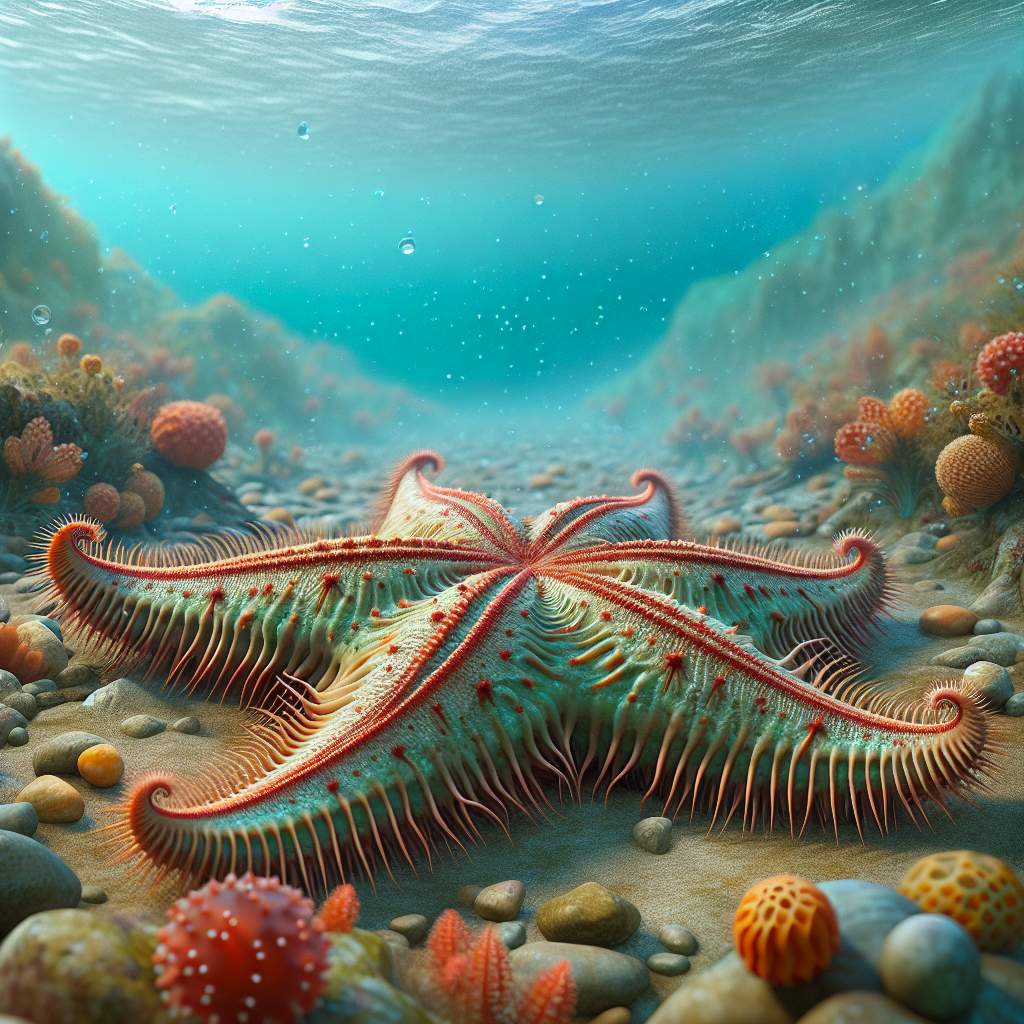The Apollonaster: Star of the Sea
Imagine a place where other-worldly creatures glide along ancient seabeds, their vibrant hues lighting up the darkness. Welcome to the mesmerizing world of the Apollonaster, a genus of deep-sea dwelling sea stars. With their unique biology and intriguing lifecycle, these creatures add a piece to the vast puzzle of marine biodiversity.
The Apollonaster was first discovered in the depths of the world's oceans, with scientists traditionally finding them in the Pacific and Indian Oceans, as well as parts of the Atlantic. These creatures, related to the more familiar starfish, have carved their existence miles below the ocean's surface. They represent an extraordinary adaptation to extreme environments, thriving in places where few organisms can survive.
The Marvel of Marine Mechanics
Part of what makes the Apollonaster so fascinating is their specialized physical structure. Like their distant cousins, the starfish, Apollonasters possess radial symmetry and a central disc with radiating arms. However, what sets them apart is their dexterity in adapting to various deep-sea habitats, ranging from soft sediments to rugged submarine cliffs.
A crucial aspect of their biology is the water vascular system, a hydraulic configuration that enables movement and feeding. This system pumps seawater through a network of canals and tube feet, allowing Apollonasters to grip onto surfaces and capture their prey efficiently. This intricate mechanism is a testament to the evolutionary engineering that makes them apt survivors of their high-pressure homes.
Bright Stars and Somber Depths
One might wonder why such organisms develop vibrant colors in a place devoid of light. For Apollonasters, coloration has more to do with their diet and the way their bodies process nutrients rather than serving as camouflage or mating displays. Like many deep-sea creatures, their diet consists of organic materials such as bits of decomposing animals or plankton, often stained with the pigmented remnants of their meals.
These pigmented compounds accumulate in the star’s tissues, producing the spectacular hues that inspire awe. When studied in laboratory settings or captured via deep-sea exploration, these colors act as a mesmerizing window into the diet, ecology, and environmental interactions of the Apollonaster.
Survival in Abyssal Ecosystems
The mysteries of deep-sea organisms like the Apollonaster pose many questions for us humans. How do they reproduce? How do they endure the intense pressures and frigid temperatures of their environments? Research indicates that Apollonasters may exhibit a form of broadcast spawning, where eggs and sperm are released into the water column, meeting by chance to form new offspring. This strategy is a common solution for sessile or less mobile animals in the vast oceanic expanse, heightening the likelihood of genetic mixing across dispersed populations.
In terms of adaptation, these sea stars have thickened coverings and structural tweaks to withstand the pressure. Their biology and life strategy present us not just a glimpse into their lives but also the potential clues into the resilience mechanisms that are key to marine life.
Human Impacts and Conservation
Despite their remote habitats, deep-sea ecosystems are not immune to the impacts of human behavior. Climate change, pollution, and deep-sea mining pose imminent threats to the delicate balance within these environments. Each creature, from the smallest microorganism to the dynamic Apollonaster, plays a role in maintaining the ecological equilibrium.
Many conservationists argue for the preservation of these unseen corners of our planet, emphasizing how much we stand to learn. Excitingly, interest in marine conservation continues to grow, with new technologies enabling deeper exploration of these areas than ever before.
Why It Matters
Stories of enigmatic creatures like the Apollonaster illuminate the vast uncharted territories still left to explore. They remind us just how little we know about the ocean, which covers over 70% of our planet. By studying such sea stars, scientists gain insights into the history of life on Earth, evolutionary biology, and environmental science.
In a broader sense, understanding these organisms encourages a sense of stewardship and responsibility towards our oceans. They invite us to wonder and re-evaluate our place on this planet. After all, every discovery in the depths reinforces humanity's capacity for curiosity and innovation.
A Bright Horizon
With continued research and exploration, we can deepen our knowledge of the oceans’ mysteries. The Apollonaster represents just one chapter in Earth’s marine story, a story that continues to be written with each new discovery. This ongoing journey is vital not only for science but also for preserving the delicate and awe-inspiring ecosystems that the Apollonaster calls home.
Humanity has a lot to gain from understanding the mysteries of the deep sea and its inhabitants. Because every deep-sea star has the potential to unlock entire galaxies of knowledge about our world.
Let's nurture our curiosity and champion our oceans, ensuring these captivating creatures get their turn in the spotlight—for decades and centuries to come.

